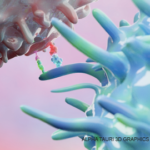 ACR CONVERGENCE 2020—Rheumatology is a field that involves a complex understanding of autoimmunity from the macroscopic scale—epidemiology of disease, global trends, etc.—down to the most fundamental level of the immune system. With this in mind, the Basic Science Year in Review, presented at ACR Convergence 2020, was extremely helpful in allowing the audience to see both the forest and the trees.
ACR CONVERGENCE 2020—Rheumatology is a field that involves a complex understanding of autoimmunity from the macroscopic scale—epidemiology of disease, global trends, etc.—down to the most fundamental level of the immune system. With this in mind, the Basic Science Year in Review, presented at ACR Convergence 2020, was extremely helpful in allowing the audience to see both the forest and the trees.
Richard Bucala, MD, PhD, Waldemar Von Zedtwitz Professor of Medicine (Rheumatology) and chief of the Division of Rheumatology, Allergy, and Immunology at Yale School of Medicine in New Haven, Conn., discussed several topics in this vein, namely: 1) autoantibody origin and persistence; 2) insights into the major histocompatibility complex (MHC); and 3) factors in rheumatoid arthritis progression and relapse.
Autoantibody Origin & Persistence
In an article this year in Cell, Singh et al. looked into how pathogenic autoantibody-producing B cells arise, persist and evade the immune system to produce disease.1 The authors noted that the pathogenesis of autoimmune disease has long been hypothesized to share some of the key features of lymphoid cancer, but to date it has not been possible to test whether lymphoma driver somatic mutations contribute to autoimmunity because these autoantibody-forming cells are quite rare.
Because rheumatoid factor (RF) antibodies in mixed (type II) cryoglobulinemic vasculitis have similar variable region sequences that are responsible for pathology in numerous independent cases of a particular autoimmune disease, the authors investigated RF autoantibody in four patients with primary Sjögren’s syndrome. Single-cell DNA and RNA sequencing revealed a cascade of somatic genetic events that included immunoglobulin gene V(D)J recombination, B cell proliferation with low rate immunoglobulin gene mutation and modest affinity maturation, acquisition of mutations in lymphoma and/or leukemia driver genes, and collection of specific V(D)J mutations that allowed for the transition from a benign RF to cryoglobulinemic vasculitis.
Dr. Bucala noted that, in revealing this RF autoantibody clonal evolution, the authors shed light on the clinical transition from benign to pathogenic autoantibodies and helped to explain increased cancer risk that can be seen with certain autoimmune diseases, such as with Sjögren’s syndrome and lymphoma.
In a separate paper, Bashford-Rogers et al. asked if B cell receptors shared features, such as B cell clonality, across different autoimmune diseases.2 In this study, investigators conducted sequence analysis of immunoglobulin heavy-chain variable (IGHV) region genes and isotype use in over 200 patients with systemic lupus erythematosus (SLE), Behçet’s disease, Crohn’s disease, anti-neutrophil cytoplasmic autoantibody vasculitis, eosinophilic granulomatosis with polyangiitis (EGPA) and IgA vasculitis.


